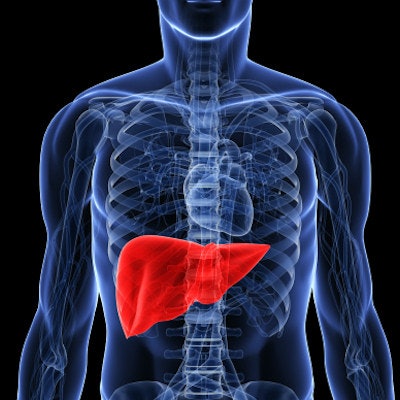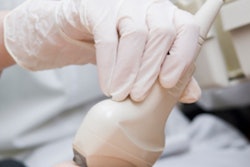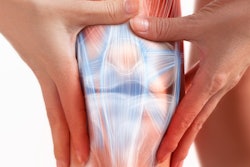
Shear-wave elastography (SWE) is an effective way to help predict liver-related complications of cirrhosis, according to a study published online March 3 in Radiology.
In fact, SWE's performance is comparable to transient elastography and better than liver biopsy and serum markers on fibrosis tests, wrote a team led by Dr. Manli Wu of Sun Yat-Sen University in Guangzhou, China.
"Two-dimensional shear-wave elastography is valuable in predicting liver-related events in patients with well-compensated cirrhosis and chronic hepatitis B viral infection," Wu and colleagues wrote. "Its predictive accuracy is similar to that of transient elastography and superior to that of liver biopsy and serum markers of fibrosis tests."
Measuring liver stiffness is one way that clinicians try to predict cirrhosis complications, the researchers noted. Their study assessed SWE's performance in this application in 430 patients with chronic hepatitis B.
The patients were referred for liver biopsy between May 2011 and May 2015; all underwent 2D SWE before biopsy, while a subset also underwent transient elastography. The patients' health status was tracked for four years through electronic medical records and phone interviews. Manli and colleagues used area under the receiver operating characteristic curve (AUC) to assess the performance of 2D SWE.
Of the 430 patients, 29 developed liver-related complications. The researchers found that liver stiffness measured with 2D SWE, spleen longitudinal diameter at ultrasound, age, and albumin level were predictive factors of liver complications. Two-dimensional SWE's AUC was 0.86, comparable to transient elastography (0.88); it was higher than that of the fibrosis stage (0.72), the aspartate aminotransferase-to-platelet ratio index (0.80), and the fibrosis-4 index (0.84).
"Two-dimensional shear-wave elastography [is] more accurate in predicting liver-related events than are the fibrosis stage and serum markers of liver fibrosis tests," the team concluded.



















